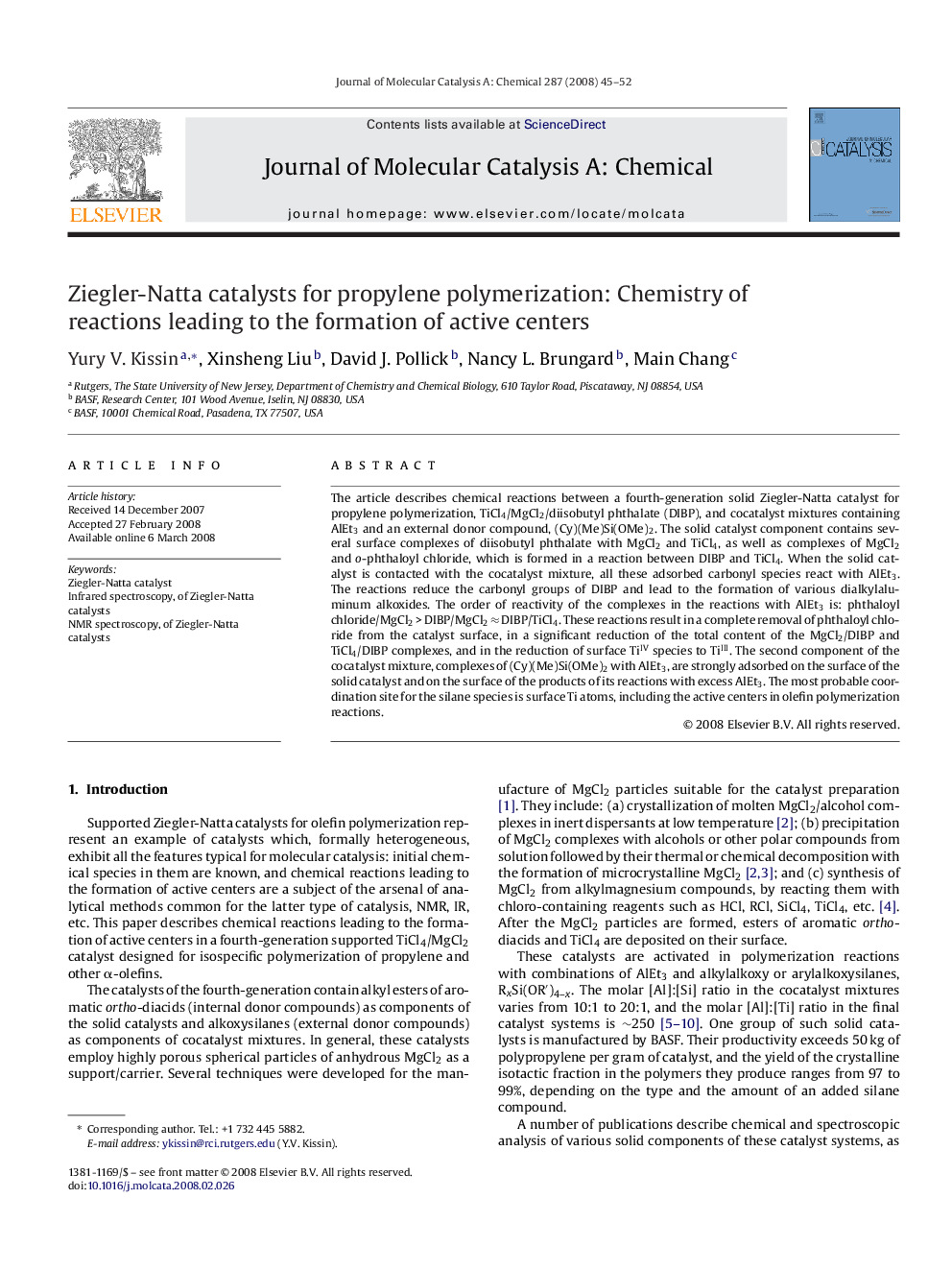| کد مقاله | کد نشریه | سال انتشار | مقاله انگلیسی | نسخه تمام متن |
|---|---|---|---|---|
| 67342 | 48478 | 2008 | 8 صفحه PDF | دانلود رایگان |

The article describes chemical reactions between a fourth-generation solid Ziegler-Natta catalyst for propylene polymerization, TiCl4/MgCl2/diisobutyl phthalate (DIBP), and cocatalyst mixtures containing AlEt3 and an external donor compound, (Cy)(Me)Si(OMe)2. The solid catalyst component contains several surface complexes of diisobutyl phthalate with MgCl2 and TiCl4, as well as complexes of MgCl2 and o-phthaloyl chloride, which is formed in a reaction between DIBP and TiCl4. When the solid catalyst is contacted with the cocatalyst mixture, all these adsorbed carbonyl species react with AlEt3. The reactions reduce the carbonyl groups of DIBP and lead to the formation of various dialkylaluminum alkoxides. The order of reactivity of the complexes in the reactions with AlEt3 is: phthaloyl chloride/MgCl2 > DIBP/MgCl2 ≈ DIBP/TiCl4. These reactions result in a complete removal of phthaloyl chloride from the catalyst surface, in a significant reduction of the total content of the MgCl2/DIBP and TiCl4/DIBP complexes, and in the reduction of surface TiIV species to TiIII. The second component of the cocatalyst mixture, complexes of (Cy)(Me)Si(OMe)2 with AlEt3, are strongly adsorbed on the surface of the solid catalyst and on the surface of the products of its reactions with excess AlEt3. The most probable coordination site for the silane species is surface Ti atoms, including the active centers in olefin polymerization reactions.
The article describes chemical reactions between a fourth-generation solid Ziegler-Natta catalyst for propylene polymerization, TiCl4/MgCl2/diisobutyl phthalate (DIBP), and cocatalyst mixtures containing AlEt3 and (Cy)(Me)Si(OMe)2. The reactions result in a significant reduction of the amounts of all carbonyl species present in the original solid catalyst (complexes of DIBP with MgCl2 and TiCl4 and complexes of MgCl2 with phthaloyl chloride formed in the process of catalyst synthesis), and in the reduction of surface TiIV species to TiIII. Components of the cocatalyst mixture, including complexes of (Cy)(Me)Si(OMe)2 with AlEt3, are strongly adsorbed on the surface of the solid catalyst and on the surface of the products of its reactions with excess AlEt3. The most probable coordination site for (Cy)(Me)Si(OMe)2 is the surface Ti species, including active centers in olefin polymerization reactions. Carbonyl species in solid catalyst prior to its interaction with cocatalyst mixture. Figure optionsDownload as PowerPoint slide
Journal: Journal of Molecular Catalysis A: Chemical - Volume 287, Issues 1–2, 15 May 2008, Pages 45–52